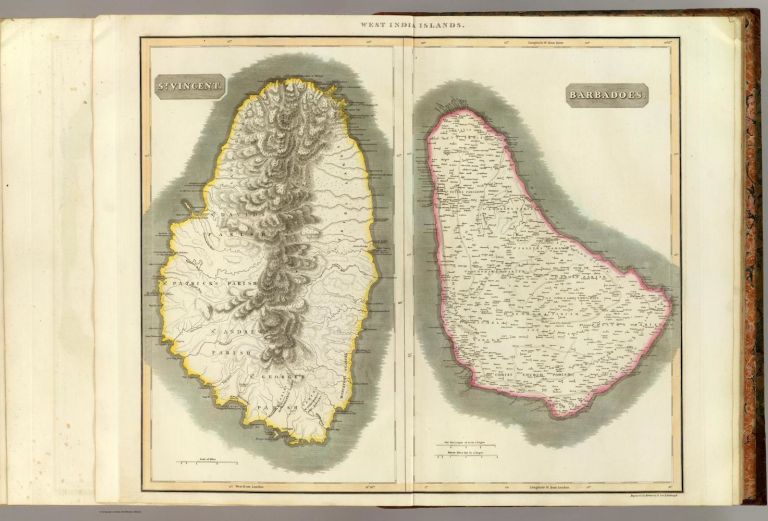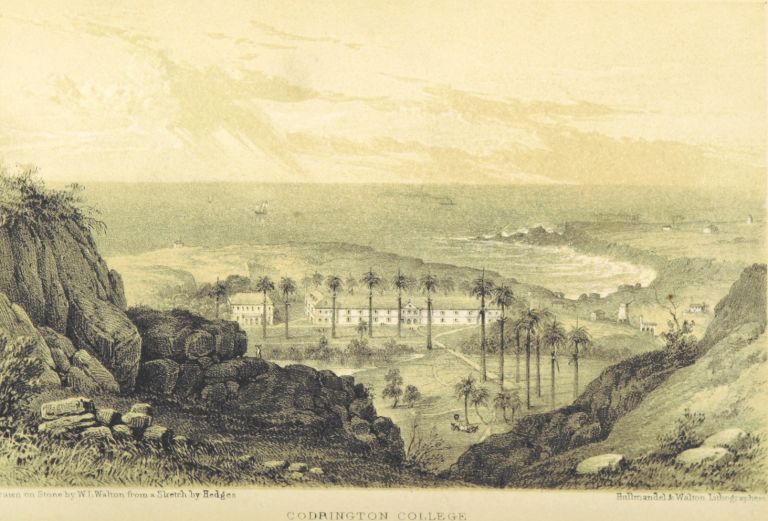Church of England’s plantations in Barbados
In 1710 the Society for the Propagation of the Gospel in Foreign Parts (SPG), the missionary wing of the Church of England, inherited two plantations, Codrington and Consett, on the eastern side of Barbados, from Sir Christopher Codrington.

Sir Christopher Codrington’s will states that he wanted the plantations to be:
“continued entire with three hundred negros at least kept always thereon and a convenient number of professors & scholars maintained there, all of them to be under the vows of poverty and chastity & obedience.”
While enslaved Africans were retained to work the properties, they were not educated as Christians and the school which eventually opened in 1745 was for white boys only. After several false starts, it became an Anglican theological college in 1830 and remains so today.
The SPG ran the plantations in the same way as all other sugar plantations on Barbados: using enslaved labour to make a product which was then sold for profit. Some members of the SPG (including Beilby Porteus when he was Bishop of Chester, before becoming Bishop of London), asked that Codrington’s enslaved people should be treated “with greater humanity and tenderness than is commonly practised by planters”, and to set an example for other estates to follow. But this never happened. Instead, extremely harsh treatment was carried out, including the branding of enslaved workers with the word ‘SOCIETY’ so that they could be identified and returned if they ran away.
The president of the SPG is usually the Archbishop of Canterbury. Records also refer to the Bishop of London. On 21 December 1733, for instance, Bishop of London Edmond Gibson is recorded as having shown the Society a letter from the Attorney General of Barbados concerning the arrears due on a ‘negro tax’. The Church of England and the Bishops were therefore fully aware of and involved in the business side of managing the estate.
Detailed records were kept on the Codrington plantation, including an inventory which lists all the enslaved workers on the estate. The names and ages of the men, women, and children entered on 31st December 1745 are listed below. Some names, like Jibah and Quashey, are repeated which might indicate family groups. Five boys and five girls had been recently bought by the society.
Men in age order from 65 to 19:
Cuffy Potter, Sandy, Swaw, Musha, Salsbury, Quominting, Quashey Boyler, Affurry, Oliver, Millen, Deago, Quaco Sloop, fortune, Cato, Quomina, Battist, John no Cungo, Kitt, Will Cjub, Cudgo, Bawfoe, Hinaquoio, Dumb, Drummer, Jeffrey, Entom, Sam, Adgah, Musso, Sesso, Addo, Occorro, Accusaw, Guy, Ocrong, Faddy, Cundah, Dussoo, George, Chasey, Quashey Long Mary, Etto Chub, Dick Tober, Assurry, Bedgah, Azing, Toway, Yammey, Quaco, Tom, Bristor, Samson, Frank, Hector, Titus, Charles, Crottah, Shamboy, Cowesso, Jack Chubb, Franty Cuffy, Peter, Zingo, Quonina, Scipio, Mafungo, Little Yammey, Cuffey Gabang
Women in age order from 65 to 17:
Young Lubbah, Mary Lubbah, Mimbo, Merria Johnto, Mary Occo, Waddy, Cossoo, Lubbah, Frankey, Hannah, Howay, Occobah, Jobbue, Minar, Coco Jubah, Maudlew, Johnoless, Margaritta, Arnoo, Gong, Mary, Obah Tussibah, Little Crumba, Adjuba Catherina, Crumbo, Jossebah, Occo Jack SMith, Hannah Catherina, Bettey, Molley, Obba Occo, Moll, Fussibah, Gundo, Moroat, Little Murriah, Fattimore, Bennebah, Josebah, Frankey, Joan, Occo, Bellah, Susan, Arnote, Jubah, Mercy, Nelly, Bellah, Seliah, Betty.
Boys in age order from 18 to 3 months:
Patrick, Anning, Cambridge, Cubbenah Jibah, London, Cuffey Gundo, Jeffery, Tom, Simon, Chaucer, Sessue, Jack, Jacob, Braveboy, Dickey, Britton, Robin, Prince, Appeah, Ammo Gundo, Cudgo, William, Tom, Drummer, Cudgo.
Girls in age order from 18 to 9 months:
Molley, Philliday, Pegg, Affibah, Jobbue, Polley, Adjubah, Rose, Alcey, Dinah, Judey, Fattimore, Sarah, Occobah, Johnto, Thoazin, Hagar, Mimbo, Obba, Gong, Mary, Heneritta, Nanney, Affibah, Mary, Moroat.
